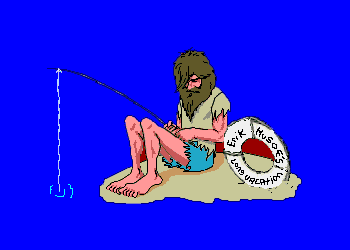|
Geography The Republic of Palau and the Federated States of Micronesia are together called the Caroline Islands. They comprise 957 islands, islets, and reefs with a total land area of 461.4 square miles. They are spread over more than a million square miles in the Pacific Ocean, just north of the equator and about two-thirds of the way from Hawaii to Indonesia. The Palau island chain consists of about 200 islands located in the western Pacific Ocean 528 mi (650 km) southeast of the Philippines. Only eight of the islands are permanently inhabited. They vary geologically from the high mountainous largest island, Babelthuap, to low, coral islands usually fringed by large barrier reefs.
History The original settlers of Palau are believed to have arrived from Indonesia as early as 2500 B.C. The Palau islands' position on the western threshold of Oceania and their proximity to Southeast Asia have led to the population being a mixture of Malay, Melanesian, Filipino, and Polynesian ancestry. Explored by the Spanish navigator Ruy López de Villalobos in 1543, the islands remained under nominal Spanish ownership for more than 300 years before Spain sold them to Germany in 1899. Japan occupied Palau during World War I and received a mandate over them from the League of Nations in 1920. They remained in Japanese control and served as an important naval base until the U.S. seized them during World War II. After the war they became a UN trusteeship (1947), administered by the U.S. Palau signed a Compact of Free Association with the U.S. in 1992, requiring the U.S. to provide economic aid in exchange for the right to build and maintain U.S. military facilities in Palau. Palau became a sovereign state in 1994. President: Tommy Remengesau (2001) Total area: 177 sq mi (458 sq km) Population (2001 est.): 19,092 (average rate of natural increase: 1.2%); birth rate: 19.6/1000; infant mortality rate: 16.7/1000; density per sq mi: 108 Capital and largest city (1995): Koror, 12,299 Government: Republic National Anthem: Belau er Kid Monetary unit: U.S. dollar used Languages: Palauan, English (official) Ethnicity/race: Palauans are a composite of Polynesian, Malayan, and Melanesian races Religions: Christian. About one-third of the islanders observe Modekngei religion, indigenous to Palau Literacy rate: 86% (1980) Economic summary: GDP/PPP (1997 est.): $160 million; note: GDP numbers reflect U.S. spending; per capita $8,800. Real growth rate: 10%. Inflation: n.a. Unemployment: 7%. Arable land: n.a. Agriculture: coconuts, copra, cassava (tapioca), sweet potatoes. Labor force: n.a. Industries: tourism, craft items (from shell, wood, pearls), construction, garment making. Natural resources: forests, minerals (especially gold), marine products, deep-seabed minerals. Exports: $14.3 million (f.o.b., 1996): trochus (type of shellfish), tuna, copra, handicrafts. Imports: $72.4 million (f.o.b., 1996): machinery and equipment, fuels. Major trading partners: U.S., Japan.
For
the island does not say: Do not walk on me. Francis Bugotu (1937 - 1992), former Ambassador of the Solomon Islands to the United Nations
GOVERNMENT AND POLITICAL CONDITIONS The citizens of Palau live with a relatively new democratic political system combined with a hierarchical traditional culture. On July 9, 1979, a constitution was approved by referendum. After much legal wrangling, it took effect on January 1, 1981. Palau held its first elections in November 1980. The president and vice president are elected by popular vote every four years. The Council of Chiefs advises the president on issues concerning traditional matters and custom. The Olbiil Era Kelulau is the elected bicameral legislature and consists of a House of Delegates and a Senate. The House of Delegates has of one member from each of Palau's 16 states. The 14 senators represent districts apportioned according to population. The judicial branch of government consists of a Supreme Court, National Court, and a lower Court of Common Pleas. All judges have life tenure. There are 16 state governments within Palau, each with an elected governor and legislature. While calm in recent years, Palau was troubled by several instances of political violence in the 1980s. President Haruo Remeliik was assassinated in 1985. In 1987, a special assistant to President Salii was convicted of firing shots into the home of the speaker of the House of Delegates, Santos Olikong. President Salii's August 20, 1988 death amid allegations of misuse of government funds was found to be a suicide. Elections were last held in 1992 and are next scheduled for November 1996. In 1992, Kuniwo Nakamura was elected President and Tommy Remengesau, Jr. was elected Vice President. The Palau Nationalist Party (PNP), formed in 1996, is currently the only political party. Other candidates run independently. |





